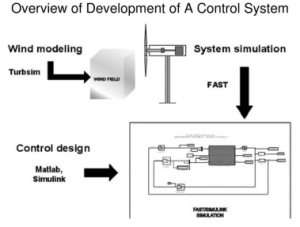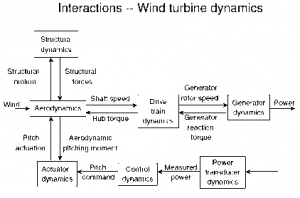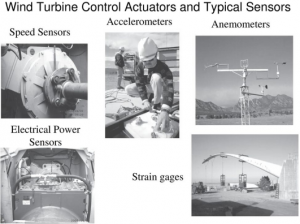Wind turbines are optimized to produce maximum power output at the most probable wind speeds around 15 m/s, 33 mph, or 33 knots. It would be uneconomical to design them for operation at the improbable higher wind speeds. It is necessary to limit the power output in high wind conditions on all wind turbines; otherwise, a runaway turbine will be overloading its rotors, mechanical power train, as well as its electrical generator leading to catastrophic failure. It is unavoidable, in order to protect the structural integrity of the wind turbine, to ignore the energy production potential of these improbable wind gusts and to provide power controls in modern wind turbines to stop the turbine when these occur.

The control system on a wind turbine is designed to:
- seek the highest efficiency of operation that maximizes the coefficient of power,
- Ensure safe operation under all wind conditions.
Wind turbine control systems are typically divided into three functional elements:
- The control of groups of wind turbines in a wind farm,
- The supervising control of each individual wind turbine, and
- Separate dedicated dynamic controllers for different wind turbine sub-systems.

The Need
- A Wind Turbine consists of numerous components of wind turbines and their operation.
- A control systemis needed to successfully generate power from these various components.
- A control system ties the operation of all the subsystems together.
- A control system is expected to
- sequence wind speed measurements,
- check the health of system components,
- Release/apply the parking brake,
- Implement blade pitch settings, and
- Close contactors to connect a wind turbine to the grid.
